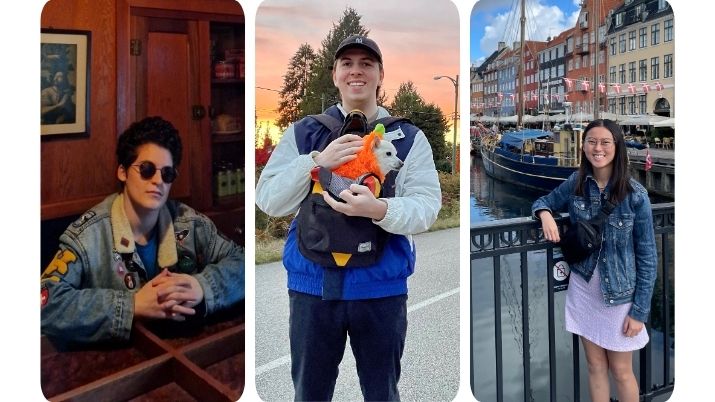

Undergraduate student research is a core part of our purpose in the Department of Central, Eastern and Northern European Studies (CENES). Connor Jol, a first-year student in the Faculty of Applied Science at the University of British Columbia, investigated archaeological evidence of Nazi crimes committed towards the end of World War II. Jol undertook this research project together with an international team of scientists. The following is Connor’s account of the group’s objectives, context, and procedures.


Over the summer of 2021, I joined an international team of scientists in Eastern Europe with two distinct objectives:
1) to identify, map, and mark lost mass graves, archives, building and artifacts from the Holocaust in a non-invasive manner.
2) to bring awareness of our work to people who wouldn’t otherwise be directly impacted.
The places we researched are scars that the Holocaust left across Europe and the final resting places of thousands. Our team, a union of scientists, geophysicists, students, and scholars, was uniquely qualified to employ noninvasive archeological techniques in identifying these sites and the history buried beneath them.
Almost all the towns of Eastern Europe have something in common; a mass burial pit from the execution of Jewish people. While most of the fieldwork sites were situated in small towns of no more than 1000 residents, major sites—including Auschwitz, Fort IX, and Sobibor—were also visited. The scale and severity of the atrocities committed during the Holocaust are often misunderstood by the general public.
Our hope is that the work we are doing gives people a renewed connection that they can hold on to, ensuring that the true story of the Holocaust is preserved, as we cannot learn from history if we cannot remember it.
A key moment in our research was the identification of a likely mass burial site at the Jungfernhof concentration camp, located outside of Riga, Latvia. Later this year, I’ll have the privilege of sharing this work at an international scientific conference.
I acknowledge that not everyone has the same research opportunities as I did. I recognize my responsibility, as a representative of the University of British Columbia, to convey and promote awareness of the true history of the Holocaust through science and communication for years to come.
I would like to thank the Department of Central, Eastern and Northern European Studies (CENES) for supporting this important work. Without the Department’s encouragement and backing, I would be unable to attend GPR 2022, (https://learn.mines.edu/gpr2022/) an international scientific conference, to share my work. I am also looking forward to giving a research presentation at CENES in Fall 2022.
Featured images: Fort IX, a defensive fort in Kaunas, Lithuania


